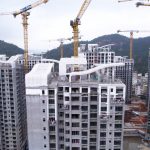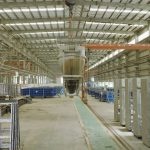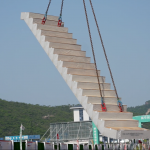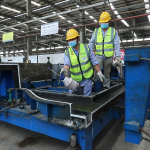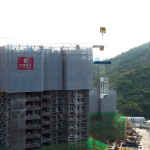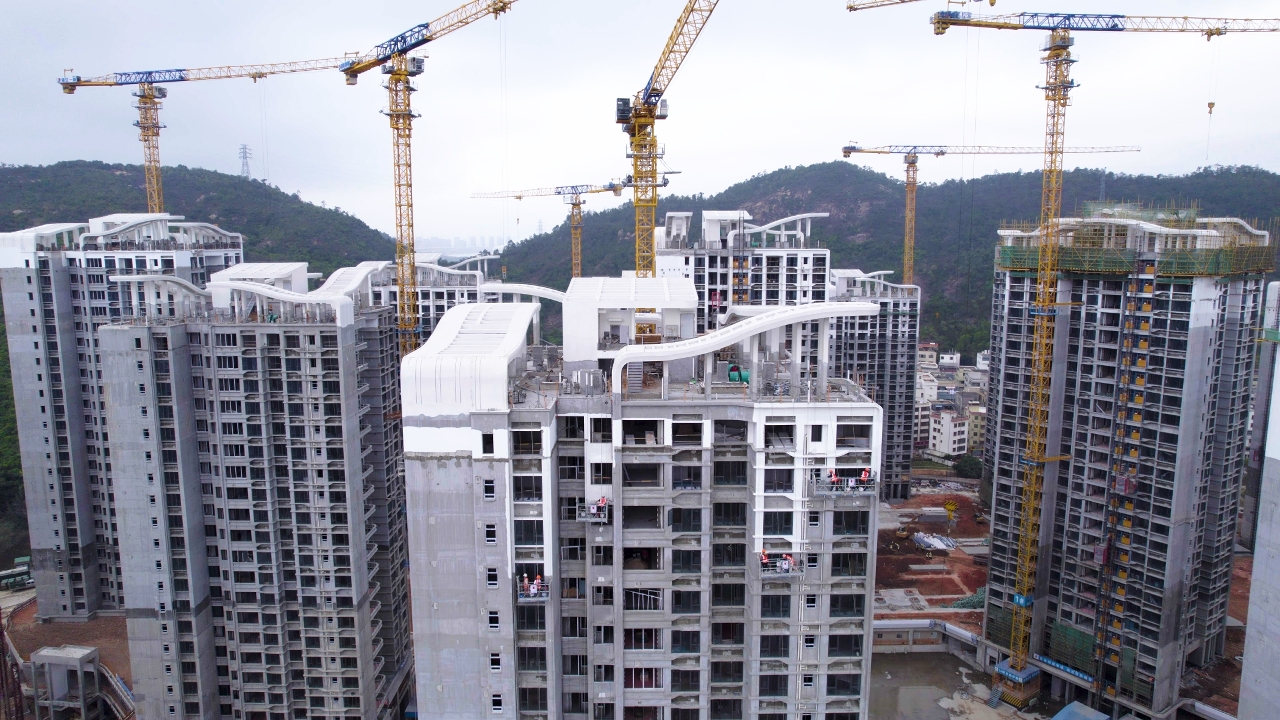 Works on the external walls are being carried out at the MNN project in Hengqin.
Works on the external walls are being carried out at the MNN project in Hengqin.
橫琴「澳門新街坊」項目預製件建造過程 | The pre-fabricated construction of Macau New Neighbourhood (MNN) project
The Macau New Neighbourhood (MNN) project in Hengqin is currently in the fitting-out and external wall works phase. The project is expected to be completed in the second half of this year.
As a high-standard project, MNN will provide over 4,000 residential units for sale and about 200 housing units for talents, complemented with schools, a health station, a seniors’ service centre and a family service centre. Prefabrication approach has been used for three types of construction components, which are façade panels, staircases and autoclaved lightweight concrete (ALC) panels. With prefabrication, it reduces the consumption of construction materials, including the amount of cement mortar usage. Prefabrication not only reduces carbon emission, but also improves construction quality and productivity.
Over 180,000 prefabricated components used at MNN
The construction industry is paying more attention to build green and build efficiently. Besides bringing down carbon emission, prefabrication also helps lower energy consumption. A large number of prefabricated components have been used at MNN’s residential units, including over 8,000 prefabricated façade panels, over 1,000 prefabricated staircases and almost 175,000 prefabricated ALC panels. The over 4,000 flats are built by the stacking and assembling of these prefabricated components, which have all passed quality inspection.
Reducing use of cement mortar by over 20,000 tonnes while achieving better concrete surface finishes
Each step of the prefabrication process goes through a strict quality and quantity control. Such standardisation and normalisation process trim down on the number of disposal of components due to miscalculations, and as a result the amount of construction waste is reduced. In addition, producing prefabricated components in a controlled environment with technical process contributes to a higher quality of concrete surface that is ready for painting, without the need of using cement mortar for the plaster layer. The construction of the MNN project has reduced the use of cement mortar by over 20,000 tonnes, effectively lowering carbon emission.
Saving 4,000 tonnes of wooden formworks, reducing construction waste
All of the prefabricated components used at MNN were manufactured in a factory, from rebar tying, concrete pouring to concrete curing, so that the amount of building materials used can be consumed more accurately. In addition, by replacing the use of plywood formworks with reusable steel and aluminium formworks, the amount of wooden materials used is reduced, in addition to the time spent on and workers needed to erect plywood formwork at the construction site. With this approach, records show that the project has in total saved as much as 4,000 tonnes of wooden formworks, and water consumption was 30 percent less for relevant works.
Saving human resource by 15 percent while lowering transport energy consumption
As prefabricated components are produced in a factory, the amount of travels by workers and delivery of building materials to the construction site were reduced, while noise disturbance and dust emission were minimised. When the prefabricated components are manufactured, they are delivered directly from the factory to the construction site for installation. This significantly reduces the amount of construction activities needed in comparison with conventional construction methods, and in this case, the project required 15 percent less human resource with prefabrication approach.
To learn more about the project, please scan the QR code and follow MUR’s WeChat Official Account.


